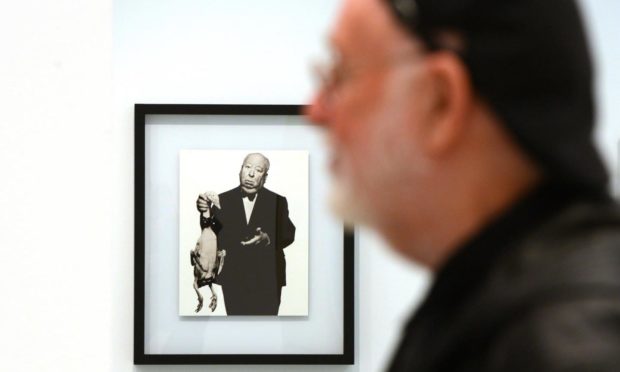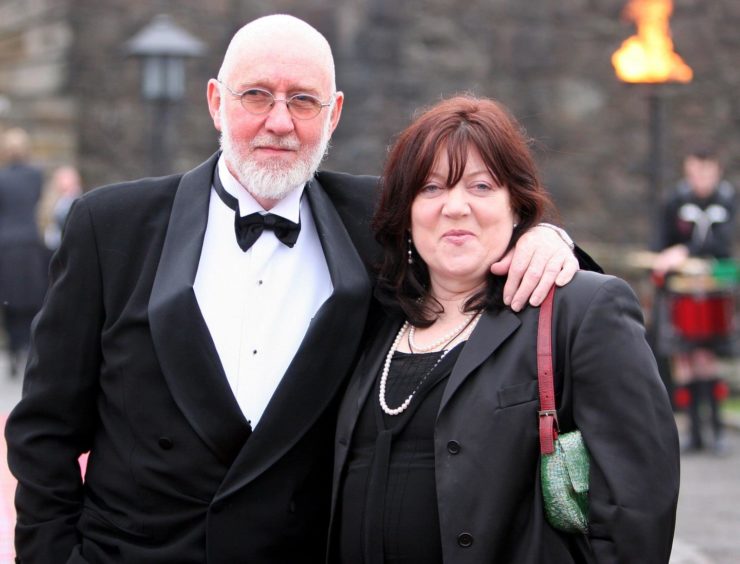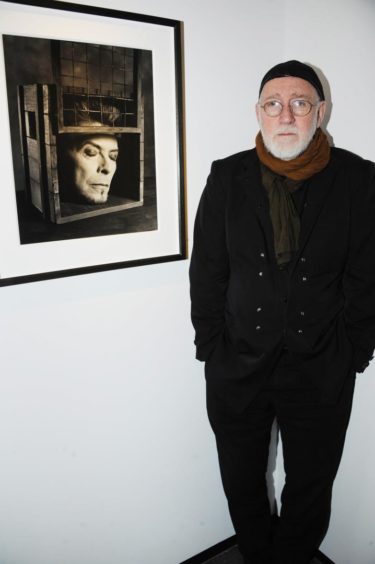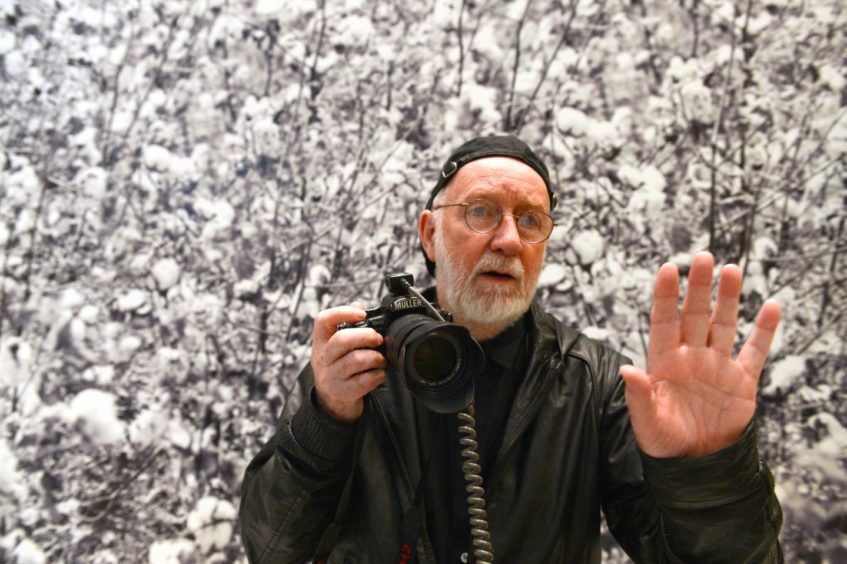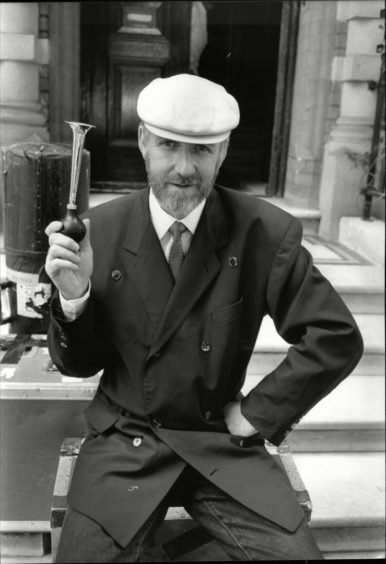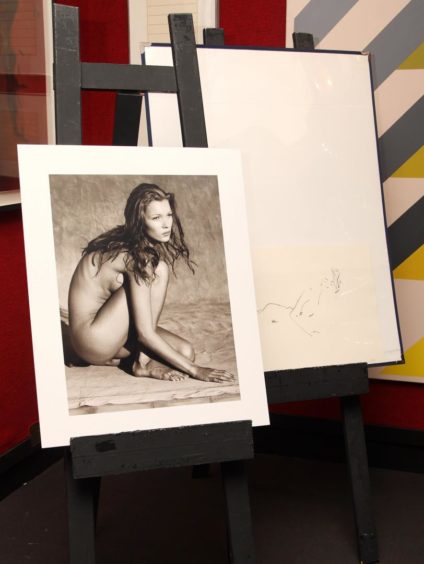Albert Watson went from living on omelettes in a tiny Dundee flat to becoming one of the world’s most successful fashion photographers.
Watson, 79, studied at Duncan of Jordanstone College of Art and Design in Dundee and has captured some of the most iconic figures of modern life during his 50-year career.
From Mick Jagger and David Bowie to Kate Moss and Naomi Campbell, Watson has a portfolio that reads like a who’s who of 20th century popular culture.
Watson’s work has appeared on over 100 Vogue covers worldwide and 40 for Rolling Stone magazine since he emigrated in 1970 to America with his wife Elizabeth.
He has also collected a wealth of experience he’s now sharing in a book called Creating Photographs which also contains tips for aspiring photographers.
Who is Albert Watson?
Albert Watson was born in 1942 in Edinburgh.
He grew up in Penicuik, Midlothian, and attended the Rudolph Steiner School in Edinburgh and Lasswade High School.
Married to Elizabeth in their teens in their native Edinburgh, the couple came to Dundee in 1961 and made their home in the city’s Nethergate.
Watson’s mother and father used to travel from Edinburgh to his flat, armed with “Dundee’s famous cakes and pies” to keep their “typical struggling student” going.
Watson did a two-year general course then a two-year course in graphic design at Duncan of Jordanstone College of Art and Design with Myer Lacombe as his lecturer.
Elizabeth undertook teacher training at Dundee College of Education then taught for a year at Longhaugh Primary School.
In the summer of 1966, in the fourth and final year of his diploma course, the 23-year-old was awarded a travelling fellowship by the International Business Machine Corporation of America which introduced him to American life in several US cities.
He returned to the UK to take up a three-year post-graduate scholarship at the Royal College of Art in London, studying photography and film.
Adding an MA to his Dundee DA, he remained in the capital for another year, lecturing on film theory at London University.
New life in America
But when Elizabeth heard she’d been accepted as an exchange teacher in Los Angeles, the couple couldn’t resist the challenge of a new life in America.
Watson, handed a camera by Elizabeth and told to “do something”, began small photographic assignments, including taking pictures at his landlord’s wedding in return for a rent-free month.
His talents were soon recognised by a leading cosmetics firm and he was asked to do some promotional pictures.
“Those photographs for Max Factor earned me a cheque for $3,000,” he said.
“After that I got a studio together and started work in earnest.”
Within two years he owned the biggest studio in LA and a luxury home.
Watson’s distinctive style garnered the attention of American and European fashion magazines such as Mademoiselle, GQ and Harper’s Bazaar, and he began commuting between Los Angeles and New York.
Throughout his career he has photographed hundreds of world-famous faces from The Queen to Clint Eastwood, David Bowie to Michael Jackson, Mick Jagger to Al Pacino, Andy Warhol to President Clinton.
“It was certainly a change from living on omelettes in Dundee,” he said.
“But I have never become a naturalised American.
“I will always be a Scot first, a British citizen second.
“I owe Dundee a lot – that’s where I gained the most important part of my education – and I’ll never forget it.
“The four years I had studying graphic design there were very formative in what I do now, which is very diversified.
“I might do a landscape in the Fairy Glen and then be looking at a poster for Kill Bill or Steve Jobs.
“Then it might be a fashion shot or a cover of Vogue.
“Sometimes people have a problem because you’re not known for a particular genre.
“But the education I had in graphic design is written all over my work.”
The wedding of Prince Andrew
In July 1986 a shock summons to Buckingham Palace arrived at the Watson’s New York apartment which was a request to take the group wedding photographs of Prince Andrew and his bride-to-be Sarah Ferguson.
It was an unusual choice, not the least because Watson had never snapped a royal before.
Watson left his mark and used a bike horn to get everyone in place!
He was, by this time, a fast-talking and tough commercial operator more used to the glitz of glossy fashion shoots.
He was already commanding fees of around $12,000 a day on assignments with the likes of Sophia Loren, Clint Eastwood, Mick Jagger, Kathleen Turner and Billy Joel.
Then again, he pointed out, when he photographed Brooke Shields, she was on $40,000 a day.
Although acclaimed for his celebrity portraits, less glamorous but more evocative work was his award-winning photographs of death row killers in Angola State Penitentiary in Louisiana.
Watson received an honorary degree from the University of Dundee in 1995 and was inducted into the Scottish Fashion Awards Hall of Fame in 2006.
His striking photographs and stunning hand-made prints are featured in galleries and museums around the globe.
He has won numerous honours during his five decades behind the lens including a Grammy Award, a lifetime achievement award from the Royal Photographic Society and he was awarded the OBE in June 2015 for his lifetime contribution to the art of photography.
The photo industry bible, Photo District News, named him one of the 20 most influential photographers of all time, along with Irving Penn and Richard Avedon, among others.
All the while, Watson has spent much of his time working on personal projects, taking photographs from his travels and interests, from Marrakech to Las Vegas to the Orkney Islands.
His latest high-profile commission was the 2019 Pirelli calendar which featured four supermodels, actresses and ballet dancers.
Albert Watson: Creating Photographs is out now.
Albert Watson talks about two of his most famous photographs from his career
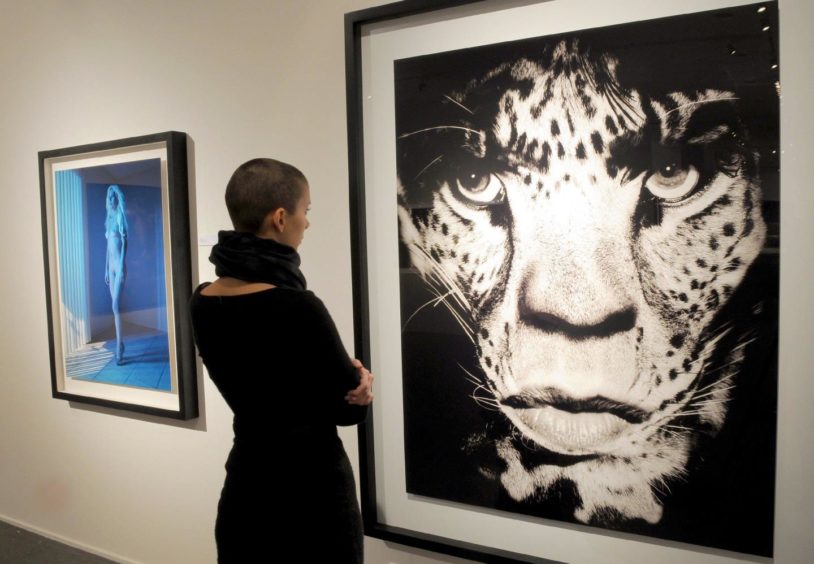
Mick Jagger, Los Angeles, 1992 (Albert Watson)
An iconic shot of Mick Jagger with a leopard’s face was another of Albert’s photos that went round the world.
“That was almost a mistake. I wanted a shot of Jagger in the front seat of a corvette with the leopard but we spoke about it together and realised it was just too dangerous. So I put plexiglass in to keep it away from him. While I was waiting I did a double exposure, photographing the leopard and then Jagger. I wasn’t even going to process the film as I thought it’d be a waste of time.”
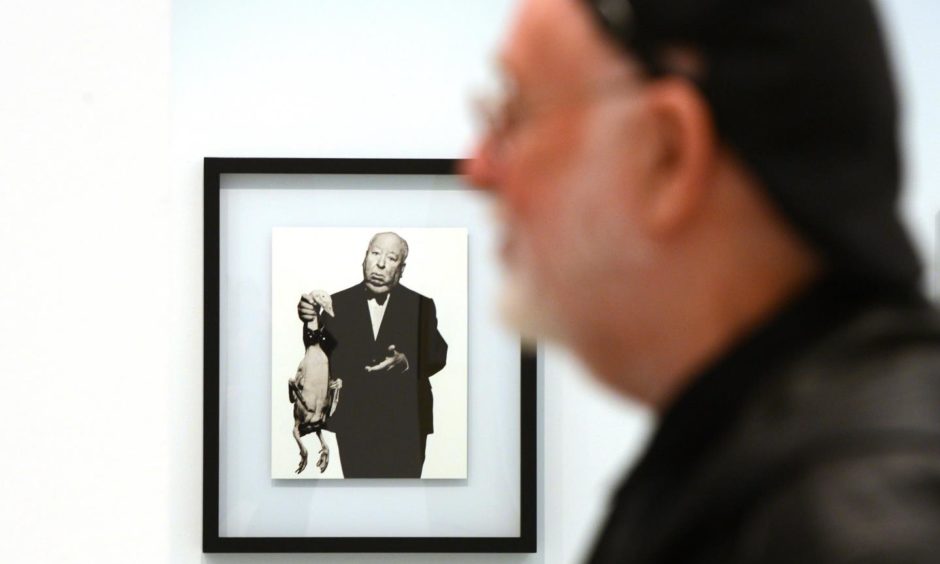
Alfred Hitchcock, 1973 by Albert Watson
A huge early breakthrough was a striking photograph in 1973 of Alfred Hitchcock holding a dead goose.
“I was so happy to get that job. They wanted a large platter with a cooked goose but I thought it would make him look like a waiter.
“The best thing I did was doing him holding a plucked goose instead. Hitchcock could see I was nervous and he really contributed, looking at the goose and pretending to cry. Looking back now, it’s one of my favourite things.”
